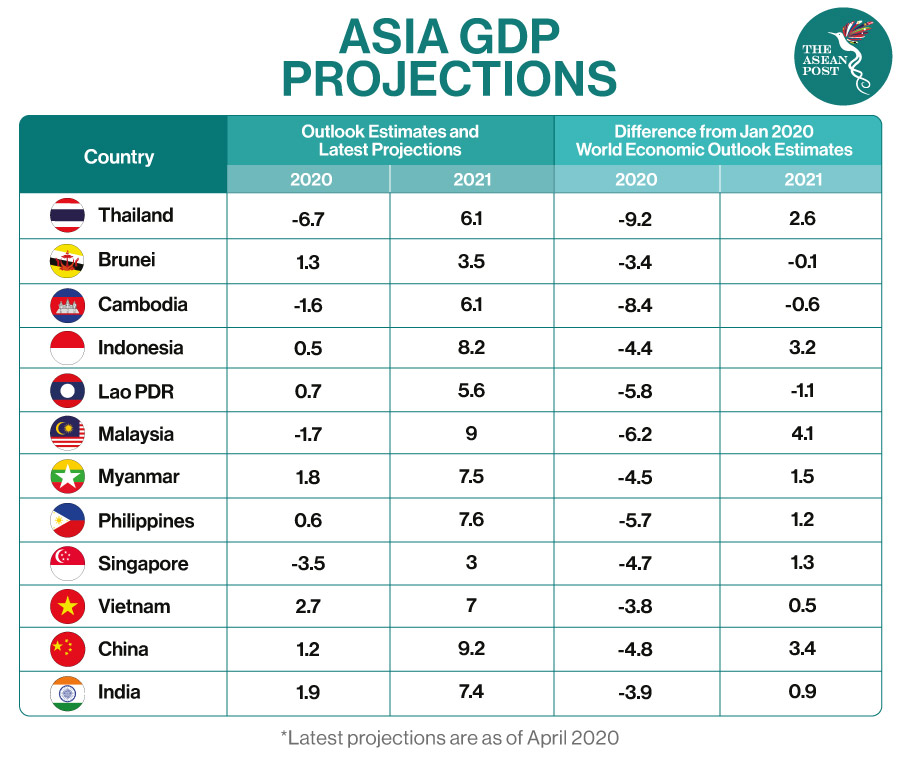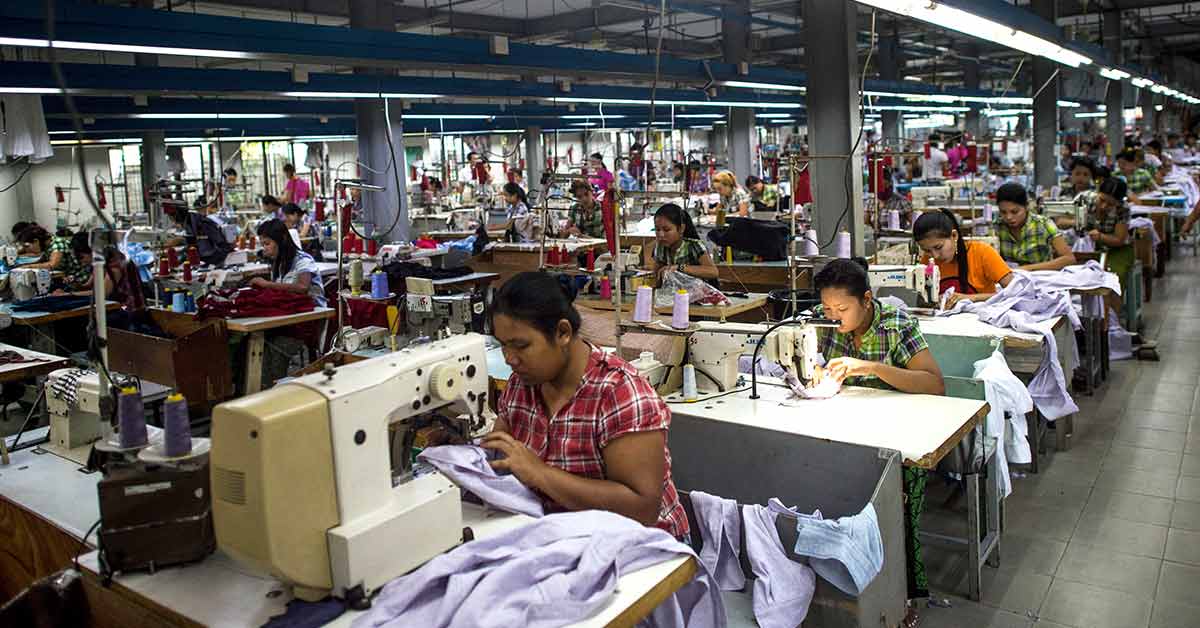To date, ASEAN has over 200,000 coronavirus infections across all 10 member states, with more than 6,000 fatalities as a result of the deadly disease. Although other regions such as Europe and the Americas have recorded more COVID-19 cases compared to Southeast Asia – the pandemic has still managed to ravage livelihoods and local industries in the latter region.
The Asian Development Bank (ADB) has projected that growth in Southeast Asia will decelerate from 4.4 percent in 2019 to one percent this year before rebounding to 4.7 percent in 2021.
“The evolution of the global pandemic – and thus the outlook for the global and regional economy –is highly uncertain. Growth could turn out lower, and the recovery slower, than we are currently forecasting,” said Yasuyuki Sawada, ADB’s chief economist.
For ASEAN member state Myanmar, despite the low reported cases of COVID-19 in the country which stands at 343 infections as of 23 July – the social and economic effects could be severe, noted the International Monetary Fund (IMF).
An IMF publication titled, ‘Six Charts on Myanmar's Economy in the Time of COVID-19’ states that the pandemic shock has affected the economy’s key growth engines. It explains that the kingdom has seen a sharp decline in exports, remittances, and tourist arrivals. At the same time, domestic economic activity has been constrained by strict measures to curb the virus.

According to a recent report by the Myanmar Trade Promotion Organisation (MTPO), the tourism industry has been hit hardest by the pandemic, followed by the garment industry. Other sectors that have been feeling the pinch include the rubber export and manufacturing sectors.
Local media in the country reported that nearly one third of all companies in the country have temporarily shuttered due to the pandemic.
Tourism
Back in March, Myanmar’s Deputy Minister for Hotels and Tourism, U Tin Latt told local media that he expects tourist arrivals in the country to fall by 50 percent this year amid the coronavirus crisis.
“Chinese tourists account for around 25 percent of tourists to Myanmar. As Chinese people have stopped travelling, we are likely to lose that 25 percent. Travellers from Western countries, Japan and Korea have also cancelled their trips, so tourist arrivals will drop by 20 to 50 percent this year,” said the minister.
International commercial flights to Myanmar have been suspended since late March and are banned until 31 July. Nevertheless, Myanmar vice-president, Henry Van Thio recently said that it was unlikely for the country to allow international passenger flights until the end of the third quarter of this year.
This has caused great concern to those in the travel industry in Myanmar.
Although the kingdom has reopened domestic tourism, local tour companies are still struggling and many may have to cease operations if international passenger flights were not allowed until October, said Union of Myanmar Travel Association chairman U Naung Naung Han.
“It appears that we can no longer wait for COVID-19 to be eliminated. By the time COVID-19 is eliminated, tour operators will no longer have a business,” he warned.
It was reported on 22 July that the country’s Ministry of Hotels and Tourism had rolled out plans to boost domestic tourism such as providing tax rebates and reliefs to tourism operators, and gradually opening tourism destinations with physical distancing guidelines in place.
Exports
Daw Naw Mutakapaw, Director General of the MTPO said that the export sector in Myanmar has been affected as a result of the pandemic, also citing declining demand as one of the main factors.
Based on local media reports, Myanmar produces around 200,000 tons of rubber each year. While the kingdom only uses eight percent of its rubber, it exports 90 percent of it to other countries such as China, Malaysia, Singapore, and Indonesia, among others.
According to the MTPO report, the rubber export sector has been significantly affected and small-scale rubber companies have been hit hard as well.
The Assistant Permanent Secretary of Myanmar’s Commerce Ministry, U Khin Maung Lwin, explained that rubber exports earnings declined by US$23 million in around seven months as the rubber export volume decreased by over 18,000 tons compared to the same period last year.
Other than that, the country’s seafood industry has also felt the pandemic pinch.
Prior to the outbreak, the Myanmar Fisheries Federation projected record exports of US$1 billion for 2020, up by 40 percent from 2019. However, the forecast has since been slashed to just US$350 million.
“It is a time of zero exports without any new orders from buyer countries,” said Hnin Oo, Senior Vice-President of the Myanmar Fisheries Federation.
The country’s fishery exports mainly depend on China, the United States (US), Japan and European countries, he added.
Unfortunately, with almost all exports ceasing since February to contain the spread of the new coronavirus, major buyers have halted their orders. It was reported that an estimated one million people in Myanmar may lose their jobs in the fisheries industry.
Related Articles:
